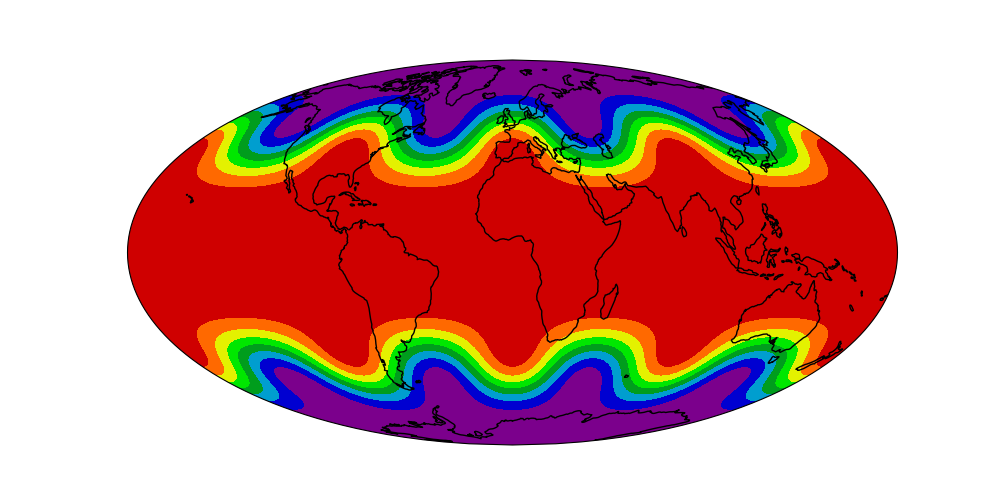Geodedetic image overlay#
[1]:
import numpy as np
def sample_data(shape=(73, 145)):
nlats, nlons = shape
lats = np.linspace(-np.pi / 2, np.pi / 2, nlats)
lons = np.linspace(0, 2 * np.pi, nlons)
lons, lats = np.meshgrid(lons, lats)
wave = 0.75 * (np.sin(2 * lats) ** 8) * np.cos(4 * lons)
mean = 0.5 * np.cos(2 * lats) * ((np.sin(2 * lats)) ** 2 + 2)
lats = np.rad2deg(lats)
lons = np.rad2deg(lons)
data = wave + mean
return lons, lats, data
lon, lat, data = sample_data(shape=(73, 145))
lon -= 180
[2]:
%matplotlib inline
import matplotlib
cm = matplotlib.cm.get_cmap("cubehelix")
normed_data = (data - data.min()) / (data.max() - data.min())
colored_data = cm(normed_data)
/tmp/ipykernel_3722/1018709867.py:5: MatplotlibDeprecationWarning: The get_cmap function was deprecated in Matplotlib 3.7 and will be removed two minor releases later. Use ``matplotlib.colormaps[name]`` or ``matplotlib.colormaps.get_cmap(obj)`` instead.
cm = matplotlib.cm.get_cmap("cubehelix")
Bad#
[3]:
import folium
m = folium.Map(location=[lat.mean(), lon.mean()], zoom_start=1)
folium.raster_layers.ImageOverlay(
image=colored_data,
bounds=[[lat.min(), lon.min()], [lat.max(), lon.max()]],
opacity=0.25,
).add_to(m)
m
[3]:
Make this Notebook Trusted to load map: File -> Trust Notebook
Good#
[4]:
m = folium.Map(location=[lat.mean(), lon.mean()], zoom_start=1)
folium.raster_layers.ImageOverlay(
image=colored_data,
bounds=[[lat.min(), lon.min()], [lat.max(), lon.max()]],
mercator_project=True,
opacity=0.25,
).add_to(m)
m
[4]:
Make this Notebook Trusted to load map: File -> Trust Notebook
Same as above but with cartopy#
[5]:
import cartopy.crs as ccrs
from cartopy.img_transform import warp_array
source_extent = [lon.min(), lon.max(), lat.min(), lat.max()]
new_data = warp_array(
colored_data,
target_proj=ccrs.GOOGLE_MERCATOR,
source_proj=ccrs.PlateCarree(),
target_res=data.shape,
source_extent=source_extent,
target_extent=None,
mask_extrapolated=False,
)
m = folium.Map(location=[lat.mean(), lon.mean()], zoom_start=1)
folium.raster_layers.ImageOverlay(
image=new_data[0],
bounds=[[lat.min(), lon.min()], [lat.max(), lon.max()]],
opacity=0.25,
).add_to(m)
m
[5]:
Make this Notebook Trusted to load map: File -> Trust Notebook
TODO: Try rasterio. Rasterio can warp images and arrays.
Compare to original#
From https://scitools.org.uk/cartopy/docs/latest/gallery/scalar_data/waves.html
